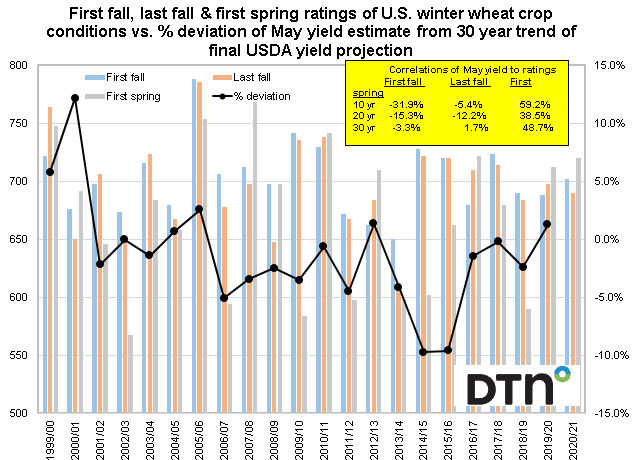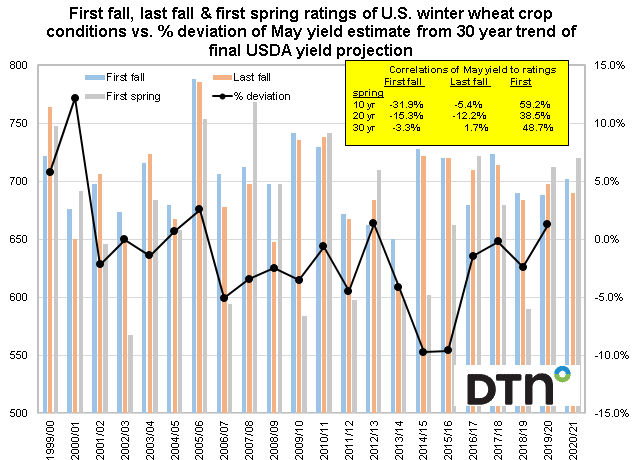Fundamentally Speaking
USDA Spring Rating of U.S Winter Wheat Crop
USDA released its first spring crop condition report of the year for the 2020 U.S. winter wheat crop with 62% of the crop rated either in the good or excellent categories compared to 60% last year.
This year's crop improved during its winter dormancy period due to much better precipitation in the southern and central Plains.
The first fall rating given back in late October showed 56% of the crop either in the good or excellent categories falling to 52% by the time the last condition report of the year was released in late November.
P[L1] D[0x0] M[300x250] OOP[F] ADUNIT[] T[]
This graphic shows the first fall, last fall and first spring rating of the year vs. the percent that the May yield estimate deviated from the 30-year trend of the final yield.
Crop conditions are measured using our usual ratings system where we weight the crop based on the percent in each category and assign that category a factor of 2 for very poor, 4 for poor, 6 for fair, 8 for good, and 10 for excellent and then sum the results.
This year's first fall rating came in at 702 vs. 688 a year ago vs. the 694 ten-year average with the last fall rating this year at 690 vs. 698 in November 2018 and the 695 ten-year average.
This year's first spring rating however came in at 720 which is not only above the year ago 712 but other than the 722 rating three years ago, is the highest first spring rating of the U.S. winter wheat crop in ten years and well above the ten-year average of 662.
The fact is there is a lot of time between now and when the crop is harvested in the June/July period.
From what we have learned over the years is what kind of conditions in terms of heat and moisture the plants will have to endure in the spring, especially during the critical reproductive phase are most important for yield determination.
We have seen years where a poor fall rating resulted in very good yields if spring conditions were favorable and conversely years where a high initial crop rating made no difference when winter and spring conditions were poor.
Note that the correlation between the first fall rating and percent yield deviation is poor, improves just slightly for the last fall crop rating which is usually around the first week of December, but then the correlations really jump for the first spring rating made at the beginning of April.
(KM)





Comments
To comment, please Log In or Join our Community .